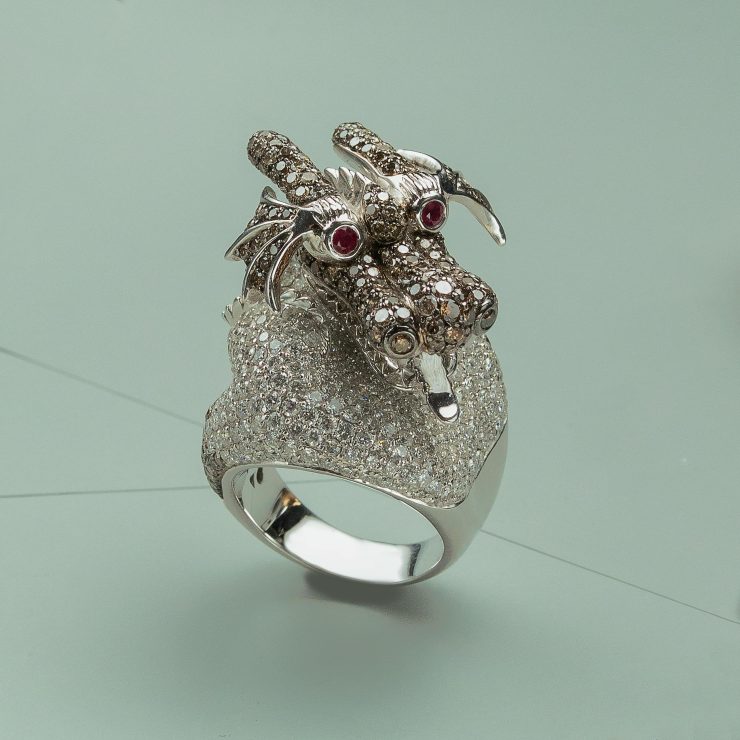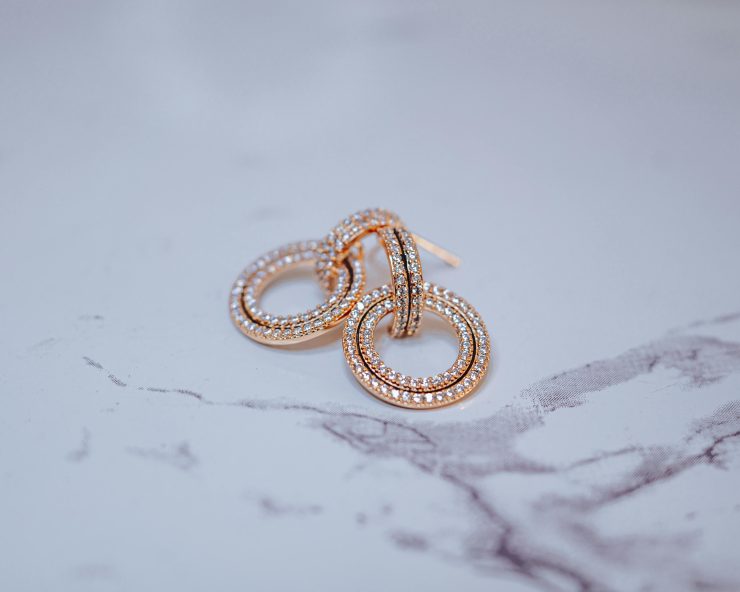Lab-grown diamonds, also known as synthetic or man-made diamonds, are created using advanced technological processes that replicate the natural diamond formation beneath the Earth’s crust. These processes, primarily High Pressure High Temperature (HPHT) and Chemical Vapor Deposition (CVD), result in diamonds that are chemically, physically, and optically identical to natural diamonds. Because they are not extracted from the earth, lab-grown diamonds do not come with the same environmental and ethical concerns often associated with traditional mining. Understanding their origin and equivalence to natural diamonds is critical when considering them for gift-giving, especially as the recipient may be concerned about authenticity or symbolism. Unlike diamond simulants such as cubic zirconia or moissanite, lab-grown diamonds exhibit the same hardness, brilliance, and fire as mined diamonds. This means that from a gemological standpoint, they are indistinguishable from their natural counterparts without specialized equipment. When choosing a lab-grown diamond as a gift, it’s essential to understand this distinction so that you can communicate its value and significance with clarity and confidence.

Evaluating the Symbolism of the Gift
One of the most important considerations when gifting a lab-grown diamond is the symbolism attached to the gesture. Traditionally, diamonds have been symbols of permanence, rarity, and natural beauty, often tied to romantic love and lifelong commitment. The idea that a diamond is “forever” is a cultural narrative deeply rooted in decades of marketing and social perception. Lab-grown diamonds challenge some of these conventions by being more accessible and ethically produced. Some recipients might embrace the progressive and eco-conscious implications of a lab-grown diamond, seeing it as a modern and thoughtful alternative that aligns with contemporary values such as sustainability, technology, and ethics. Others, however, might still hold traditional views that associate emotional value with the natural formation and geological rarity of mined diamonds. Therefore, it is advisable to understand the recipient’s perspective and values before choosing a lab-grown diamond as a meaningful gift. This step ensures that the emotional intent behind the gift aligns with how it is perceived by the person receiving it.
Ethical and Environmental Implications
One of the most compelling reasons people opt for lab-grown diamonds is their reduced environmental impact and the absence of human rights concerns commonly associated with traditional diamond mining. While not entirely free from environmental cost—since the production of lab-grown diamonds still requires significant energy—these gems are typically considered a more sustainable option, especially when sourced from producers that utilize renewable energy. Moreover, lab-grown diamonds are not tied to conflict zones or the concept of “blood diamonds,” which have historically plagued the natural diamond industry with associations to war, exploitation, and illegal trade. For a gift-giver who prioritizes ethical consumption and wants their gift to reflect conscientious values, lab-grown diamonds offer a powerful narrative. Being able to articulate this ethical dimension can add a layer of thoughtfulness to the gift. It’s also helpful to research the producer of the diamond, as not all lab-grown diamonds are created with the same commitment to ethical practices or carbon neutrality. Certification by third-party organizations can provide additional assurance.
Budget Considerations and Value Perception
From a financial standpoint, lab-grown diamonds present a different value proposition than natural diamonds. On average, lab-grown diamonds cost 30% to 50% less than their mined equivalents of comparable quality. This price advantage allows gift-givers to potentially purchase larger or higher-quality stones for the same budget. However, it’s also important to understand the implications this has for long-term value and resale potential. Lab-grown diamonds currently have lower resale value, and some jewelers may not accept them for trade-in or buyback programs. Therefore, if the gift is being given as an investment or heirloom, a mined diamond may still be seen as holding greater long-term value. On the other hand, if the primary intent is emotional or aesthetic, then the cost savings and ethical benefits of a lab-grown diamond may far outweigh the concerns about resale. Communicating the value of the gift in terms of sentiment, design, and modern relevance can be key to helping the recipient appreciate it beyond just its market value.
Certification and Grading Standards
Just like natural diamonds, lab-grown diamonds should come with proper certification and grading from reputable gemological laboratories. The Gemological Institute of America (GIA), International Gemological Institute (IGI), and other major institutions now issue reports for lab-grown diamonds that assess the traditional “Four Cs”: cut, color, clarity, and carat weight. When purchasing a lab-grown diamond as a gift, make sure it includes this documentation to assure the recipient of the gem’s authenticity and quality. A diamond certificate serves not only as proof of what the diamond is but also provides a basis for insurance, appraisals, and future maintenance. In some cases, the lack of certification can cause confusion or doubt about whether the stone is real or synthetic, and this can diminish the perceived value of the gift. It is also worth noting that some jewelers offer in-house grading reports, but these may not carry the same weight or neutrality as those from independent institutions. Always aim for transparency to ensure the gift is well received and trusted.

Customization and Personalization Options
Another major advantage of choosing a lab-grown diamond for gift-giving is the wide array of customization options it affords. Since lab-grown diamonds are more affordable, buyers often have greater flexibility to select higher grades of cut, clarity, and color, or opt for larger carat sizes without exceeding their budget. This can be particularly useful for those looking to create a bespoke piece of jewelry—such as a custom engagement ring, pendant, or pair of earrings—that reflects the personality and taste of the recipient. Many jewelers who specialize in lab-grown diamonds also offer design services that allow you to personalize settings, metal types, engraving, and overall aesthetics. Personal touches can significantly enhance the emotional value of the gift, transforming it from a generic item into a deeply meaningful keepsake. For individuals who value originality and thoughtful detail, a custom-designed piece using lab-grown diamonds can resonate more than a mass-produced item featuring a natural stone.
Reactions and Social Perceptions
While lab-grown diamonds are gaining popularity and acceptance, it’s still important to consider how the recipient—and their social circle—might perceive such a gift. Some people may question the “realness” of lab-grown diamonds due to lingering misconceptions that they are merely imitations or less prestigious than natural stones. Others may enthusiastically embrace them for their scientific ingenuity, ethical production, and modern relevance. Social context can also play a role; for instance, in some circles, a natural diamond may still be viewed as more desirable or status-enhancing, while in others, lab-grown alternatives may be celebrated as environmentally responsible and forward-thinking. The success of the gift, therefore, hinges not only on the objective characteristics of the diamond but also on how it aligns with the recipient’s identity, social values, and personal aesthetics. When in doubt, it may be helpful to discuss the subject subtly in advance or opt for transparency when presenting the gift, explaining why a lab-grown diamond was chosen.
Where to Buy and What to Watch Out For
Choosing the right retailer is essential when purchasing a lab-grown diamond as a gift. While numerous reputable jewelers now offer high-quality lab-grown diamonds, there are still many variations in pricing, quality assurance, customer service, and return policies. Reputable retailers should clearly disclose that the diamond is lab-grown and provide third-party certification for transparency. They should also offer secure shipping, warranties, and return options in case the gift does not meet expectations. Online retailers have widened access to lab-grown diamonds, often offering better prices and more variety than brick-and-mortar stores, but they also require greater diligence from the buyer. Look for customer reviews, business accreditations, and detailed information on grading and certification before making a purchase. Some online platforms even offer virtual consultations and 360-degree video previews to help buyers make informed decisions. Avoid sellers that do not provide grading reports or those who use vague terms like “diamond simulant” without clarifying what that entails.
Timing and Presentation of the Gift
When giving any type of fine jewelry, including lab-grown diamonds, timing and presentation can greatly affect how the gift is received. The occasion—be it an engagement, anniversary, birthday, or milestone celebration—will influence the emotional tone and expectations surrounding the gift. A lab-grown diamond might be seen as especially appropriate for occasions that emphasize modern values, such as Earth Day or ethical milestones, whereas traditional occasions like engagements may require more explanation if the recipient expects a mined stone. Presentation also matters; a beautiful box, a handwritten note, or a well-thought-out setting can elevate the perceived value of the gift. In some cases, including information about the diamond’s ethical origins or customization story can enhance the recipient’s appreciation. If the diamond is part of a larger piece of jewelry, consider having it professionally cleaned and packaged to ensure it arrives in perfect condition. These small but significant details contribute to the overall experience of receiving a lab-grown diamond as a meaningful, memorable gift.
Final Thoughts: Aligning Intent with Impact
Ultimately, the decision to give a lab-grown diamond should align the giver’s intentions with the recipient’s values and expectations. The choice reflects not only an aesthetic preference but also a broader worldview—one that may emphasize sustainability, ethical production, or scientific innovation. By understanding the nuances of lab-grown diamonds—from their physical properties and certification requirements to their social implications and emotional symbolism—gift-givers can make informed, confident decisions. What makes a gift truly special is not just its monetary value but the thought and care behind it. A lab-grown diamond, when chosen with knowledge and presented with sincerity, can be just as meaningful—if not more so—than its mined counterpart. With proper research, personalization, and communication, lab-grown diamonds can serve as a powerful and enduring symbol of love, celebration, and intention.